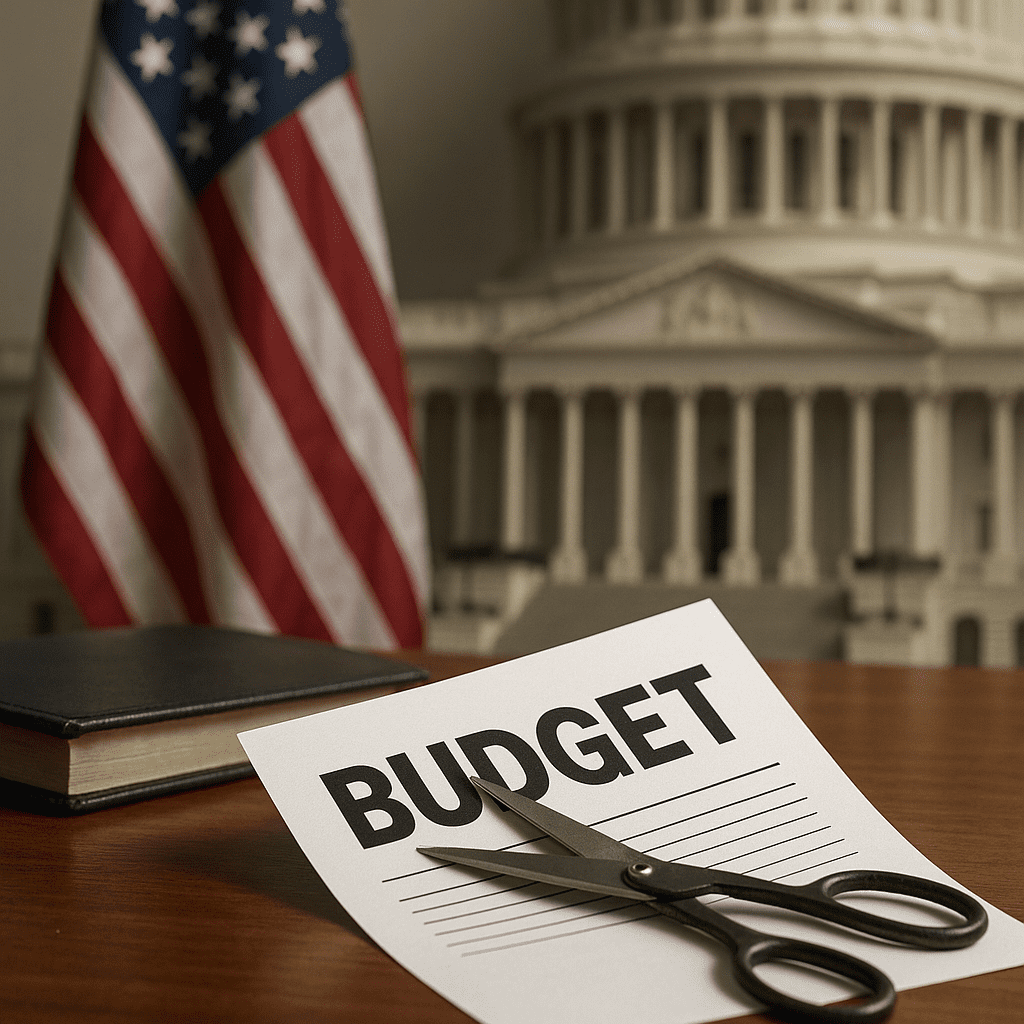- The 2026 budget proposal reduces over $8 billion from major water-related programs.
- The Environmental Protection Agency’s revolving loan funds face a $2.46 billion cut.
- Utah’s Central Utah Project could lose $609 million, raising local concerns.
- Several conservation and watershed initiatives are proposed for elimination.
Tuesday, May 20, 2025 — In the Trump administration’s draft Fiscal Year 2026 discretionary budget proposal , dozens of water-related programs face sharp funding reductions or outright elimination. The proposed cuts target programs across multiple federal agencies, including the Environmental Protection Agency, the Department of the Interior, the Department of Agriculture, and the Army Corps of Engineers. The intent, according to the administration, is to return responsibility for water management to states and local governments while prioritizing federal funding for infrastructure deemed essential to national interests.
, dozens of water-related programs face sharp funding reductions or outright elimination. The proposed cuts target programs across multiple federal agencies, including the Environmental Protection Agency, the Department of the Interior, the Department of Agriculture, and the Army Corps of Engineers. The intent, according to the administration, is to return responsibility for water management to states and local governments while prioritizing federal funding for infrastructure deemed essential to national interests.
Major Cuts to EPA Water Infrastructure Programs.
The Environmental Protection Agency’s Clean Water and Drinking Water State Revolving Loan Funds would be reduced by $2.46 billion. According to the budget document  (p. 14), the program was initially designed “to give money to States via formula allocation for seed money to set up their own water infrastructure loan programs without continued annual appropriations.” The proposal argues that states should now fund their own projects or seek other sources of funding.
(p. 14), the program was initially designed “to give money to States via formula allocation for seed money to set up their own water infrastructure loan programs without continued annual appropriations.” The proposal argues that states should now fund their own projects or seek other sources of funding.
Also facing a $1.006 billion reduction are the EPA’s categorical grants, which support state compliance with environmental regulations. The administration claims these grants have become “a crutch for States at the expense of taxpayers.”
The EPA’s Hazardous Substance Superfund, tasked with cleanup of oil spills and toxic waste sites, is proposed to be cut by $254 million. The budget justifies this reduction by citing new revenues from taxes under the Infrastructure Investment and Jobs Act and litigation recoveries.
Interior Department Realignment.
Funding for the Bureau of Reclamation and the Central Utah Project would be cut by $609 million. According to the budget (p. 28), the intent is to shift focus solely to the maintenance of water infrastructure, eliminating support for activities such as habitat restoration.
(p. 28), the intent is to shift focus solely to the maintenance of water infrastructure, eliminating support for activities such as habitat restoration.
The Salt Lake Tribune raised concerns about this proposed cut in a May 19, 2025, article , noting the project is Utah’s largest and most complex water system. The Central Utah Project delivers Colorado River water to Utah’s growing Wasatch Front for municipal and agricultural use. “No one will say what those cuts would entail,” the article noted, underscoring the lack of clarity on which programs, like fish habitat restoration or Provo River delta improvements, might be impacted.
, noting the project is Utah’s largest and most complex water system. The Central Utah Project delivers Colorado River water to Utah’s growing Wasatch Front for municipal and agricultural use. “No one will say what those cuts would entail,” the article noted, underscoring the lack of clarity on which programs, like fish habitat restoration or Provo River delta improvements, might be impacted.
USDA Water and Conservation Program Reductions.
The U.S. Department of Agriculture’s watershed and conservation programs are also on the chopping block. These include:
-
A proposed elimination of the Watershed Operations program (-$16 million), which helps maintain small, locally owned dams.
-
A $754 million reduction in Private Lands Conservation Operations, which funds technical assistance to implement water conservation practices.
-
A $721 million reduction to Rural Development Programs that support water infrastructure in underserved areas.
-
Elimination of State, Tribal, and NGO (Non-Governmental Organization) Conservation Grants (-$170 million), many of which fund aquatic habitat and watershed protection projects.
NOAA, USGS, and Forest Service Research Cutbacks.
The National Oceanic and Atmospheric Administration’s operations, research, and grant programs face a proposed cut of $1.311 billion. The budget states that these programs have “consistently funded efforts to radicalize students against markets and spread environmental alarm.” This could impact climate-related water research and resilience planning.
The U.S. Geological Survey is also targeted for a $564 million reduction. These cuts would likely affect water-related research, particularly those tied to climate models or university partnerships.
Implications for Local Communities.
Programs under the Army Corps of Engineers are not spared either. The Civil Works Water Infrastructure Finance and Innovation Act program is proposed for elimination, and a $1.071 billion reduction is planned for the Harbor Maintenance Trust Fund. Additionally, the Treasury Department’s Community Development Financial Institutions program, often used for climate resilience, including water infrastructure, is slated for a $291 million cut.
While the administration frames these cuts as a return to fiscal discipline and federalism, critics worry about their impact on public health, climate resilience, and equitable water access.
As the Salt Lake Tribune reported, environmental advocates and local officials are left uncertain. Zach Frankel, executive director of the Utah Rivers Council, warned the proposed $609 million cut to the Central Utah Project could jeopardize efforts to restore the Provo River delta and protect the endangered June sucker fish. He also noted the potential implications for the Great Salt Lake’s conservation measures, recently authorized by Congress.
reported, environmental advocates and local officials are left uncertain. Zach Frankel, executive director of the Utah Rivers Council, warned the proposed $609 million cut to the Central Utah Project could jeopardize efforts to restore the Provo River delta and protect the endangered June sucker fish. He also noted the potential implications for the Great Salt Lake’s conservation measures, recently authorized by Congress.
“Senator Lee is aware of the administration’s budget proposal and is tracking concerns Utahns have raised,” a spokesperson for Senator Mike Lee told the Tribune, adding that the process is still in early stages and subject to congressional negotiation.
Budget Increases for Drinking Water.
There are some increases. Page 14 of the budget proposes increases to drinking water programs administered by the EPA:
- $9 Million Increase: The Budget provides $124 million in funding for the critical drinking water mission at EPA, protecting Americans, and especially children, from unsafe or contaminated water. The $9 million increase from the 2025 enacted level is to properly equip EPA with funds to respond to drinking water disasters, directly helping people on the ground recover from such emergencies.
- $27 Million Increase for Indian Reservation Drinking Water: The Budget increases funding for Tribes to retain access to critical funding for drinking water and wastewater infrastructure on their lands, with a total level of $31 million for the grant program. While the Budget rightfully returns responsibility for State infrastructure to the States, it also prioritizes funding for Tribes to be able to maintain their water infrastructure.
The proposed 2026 budget remains only a recommendation. Congress will ultimately decide whether to adopt, revise, or reject these proposed reductions.
Links:

